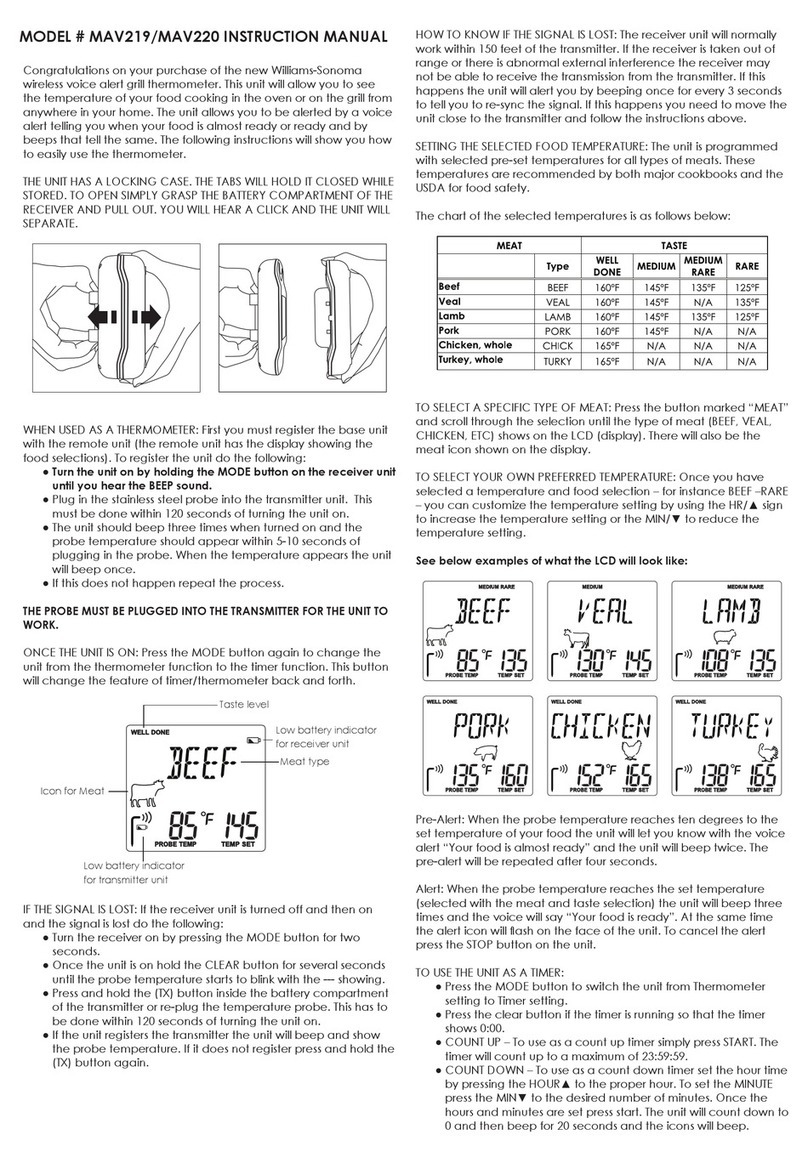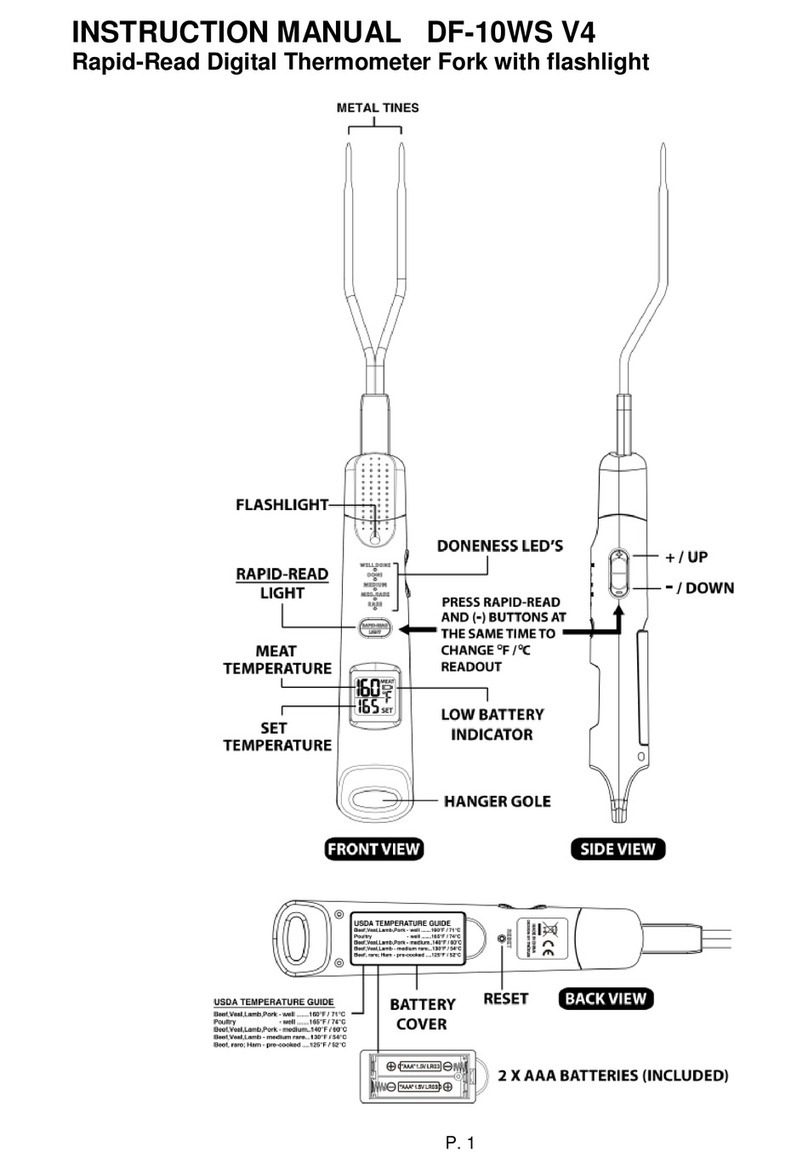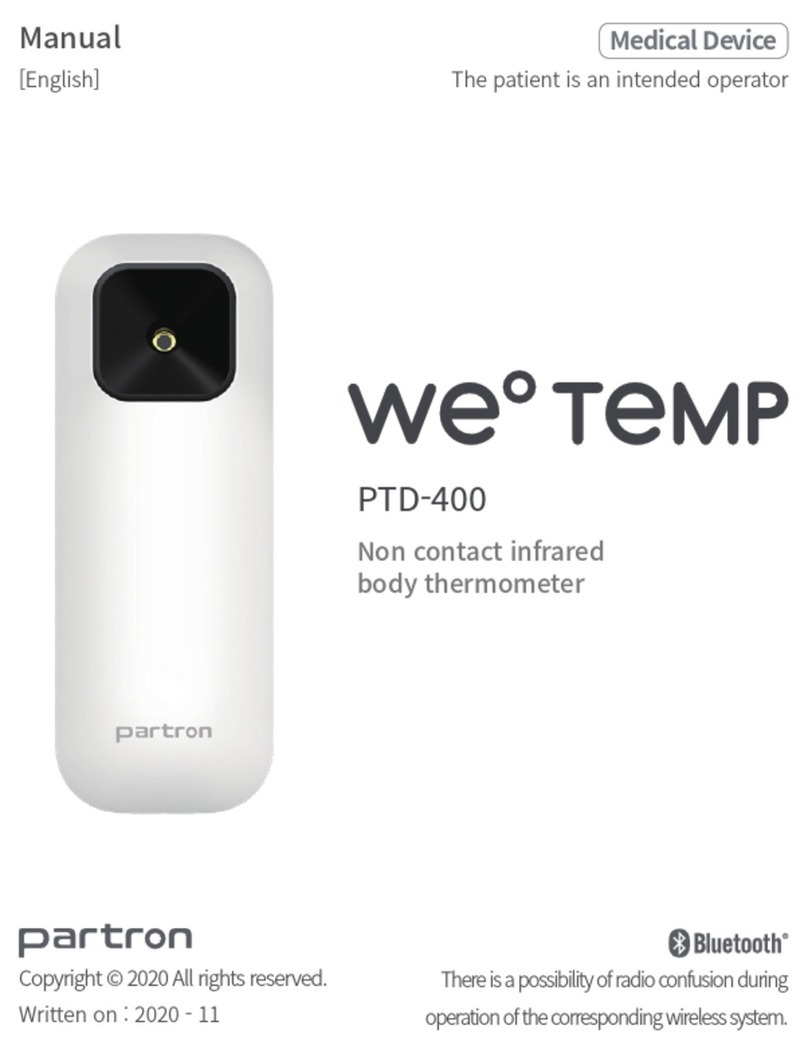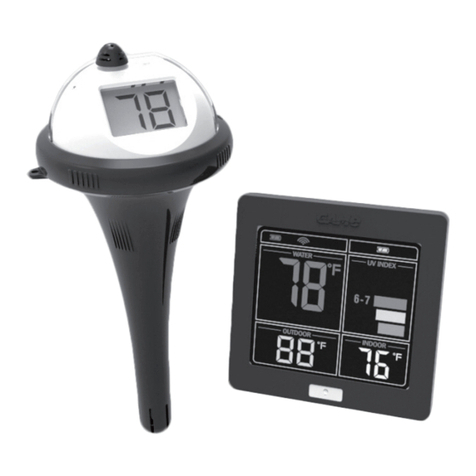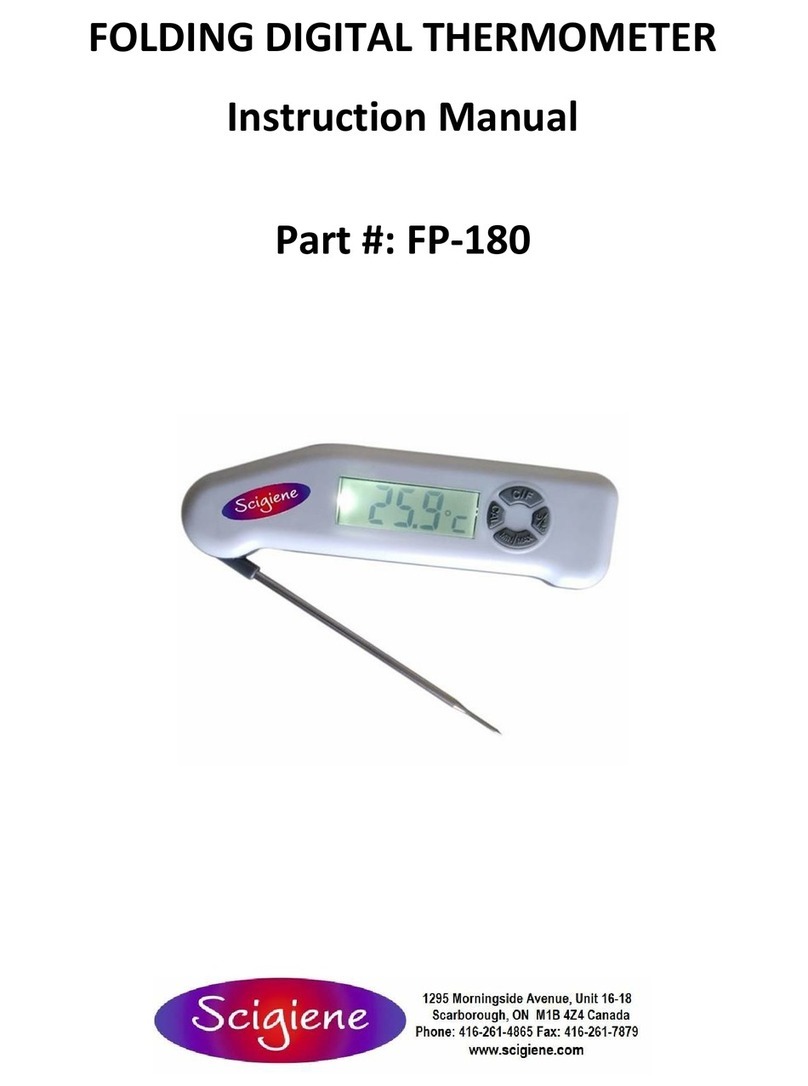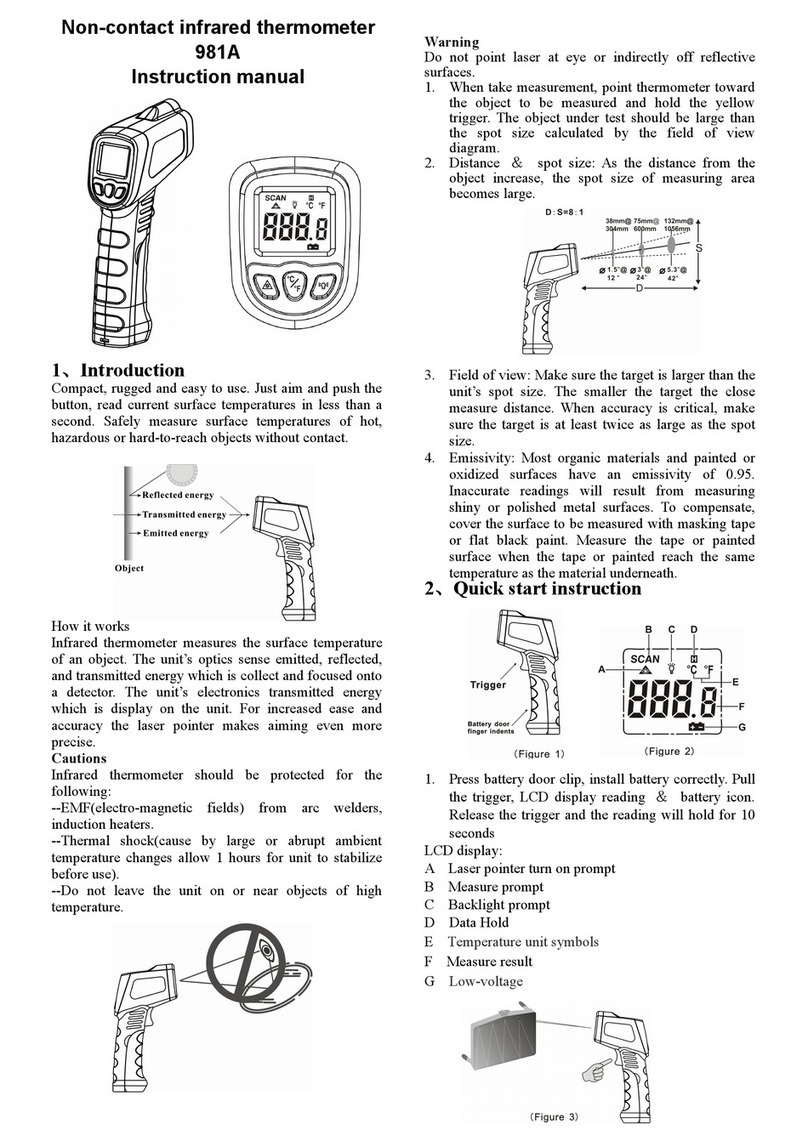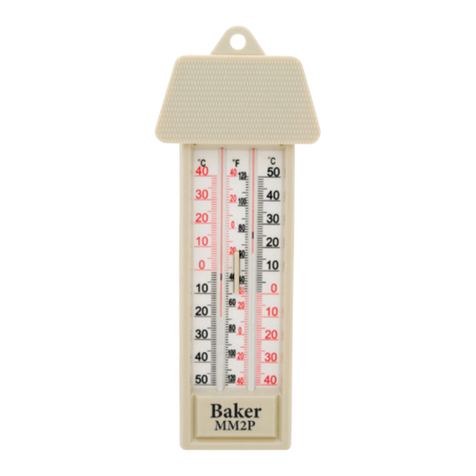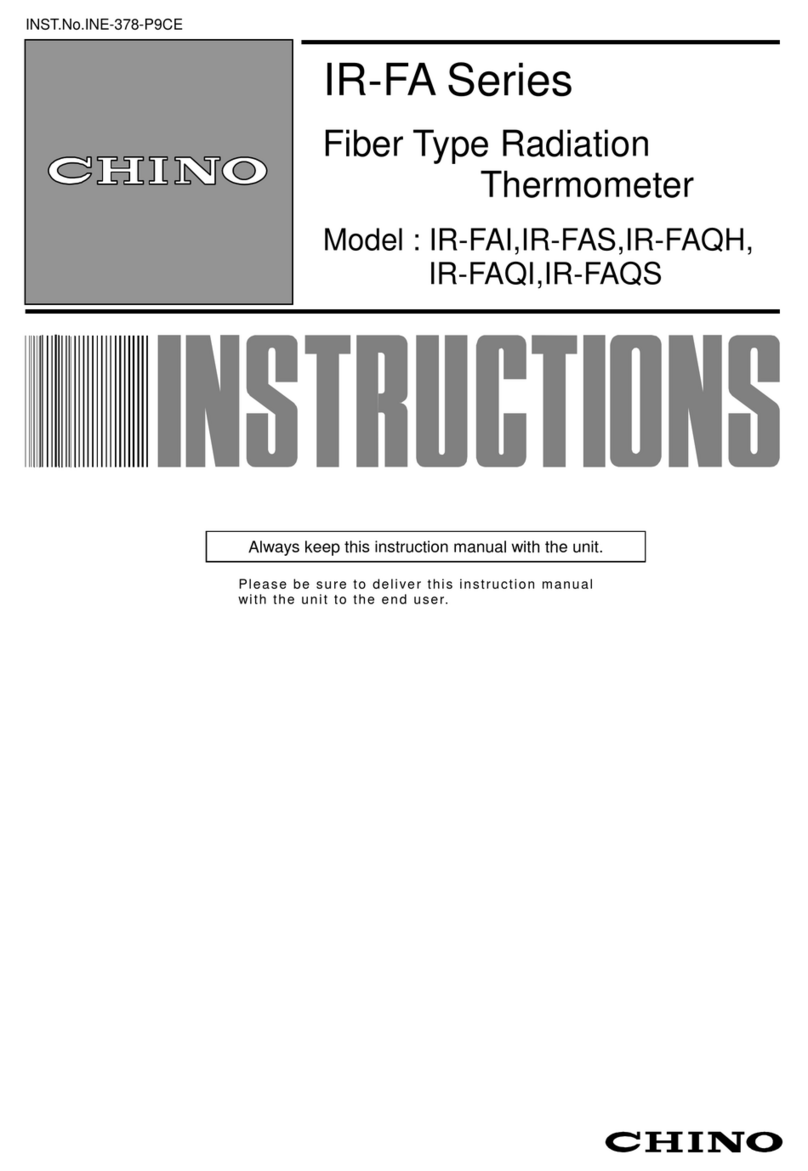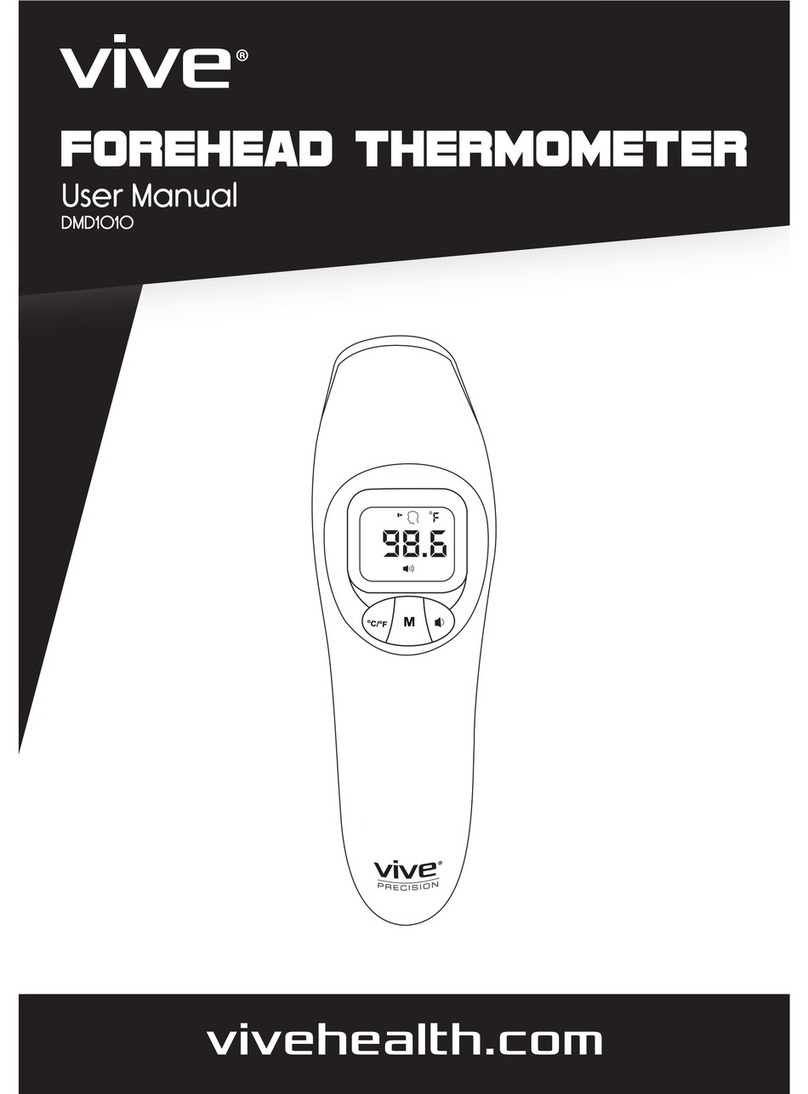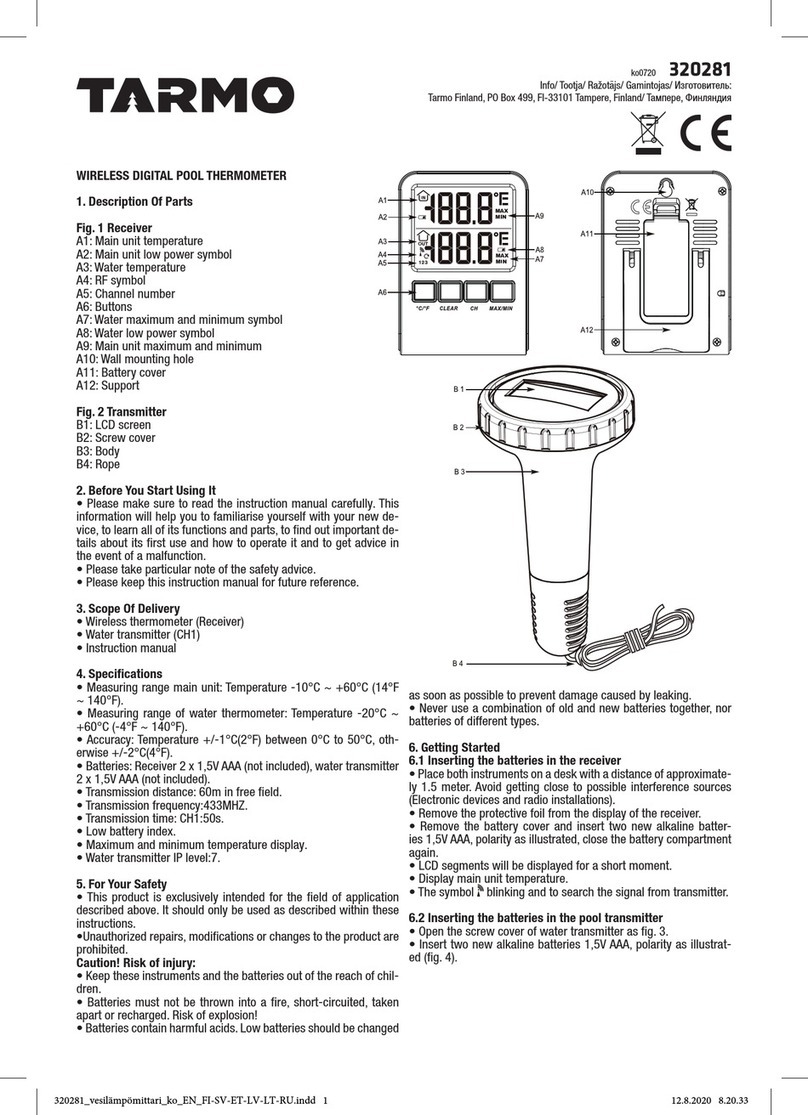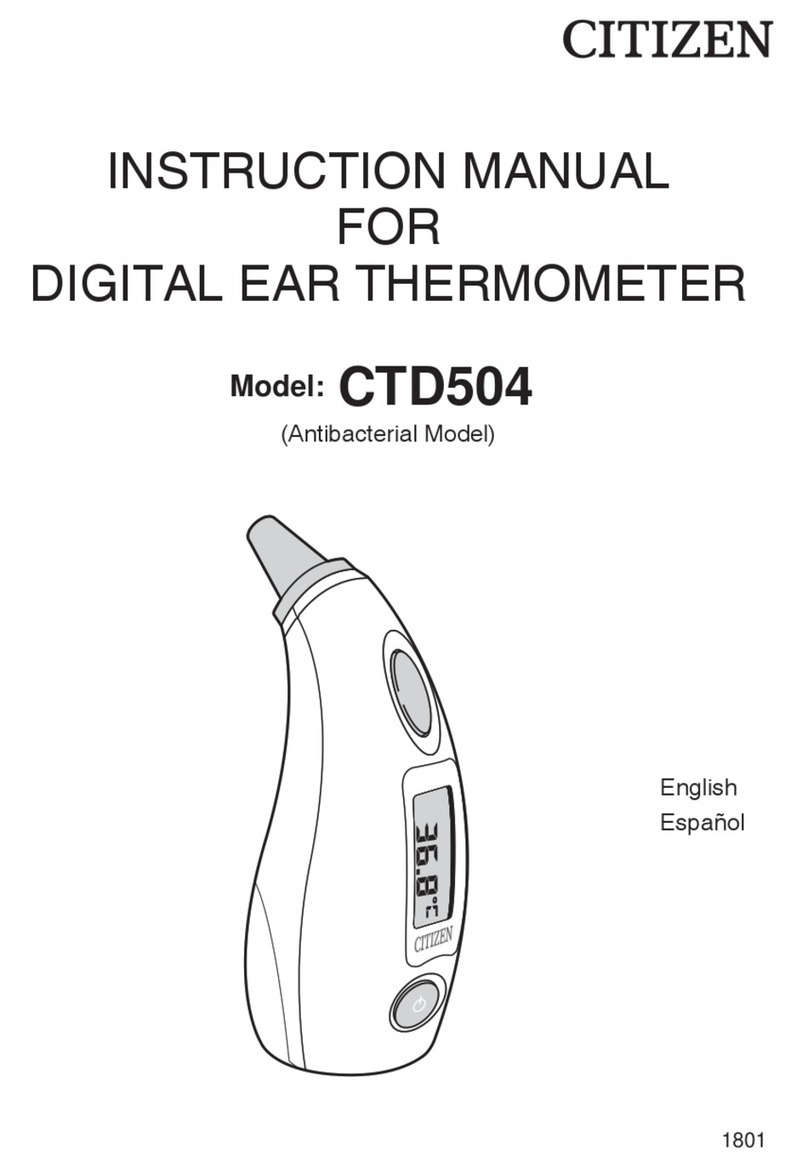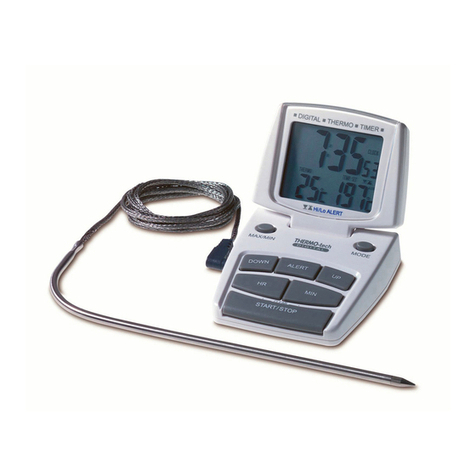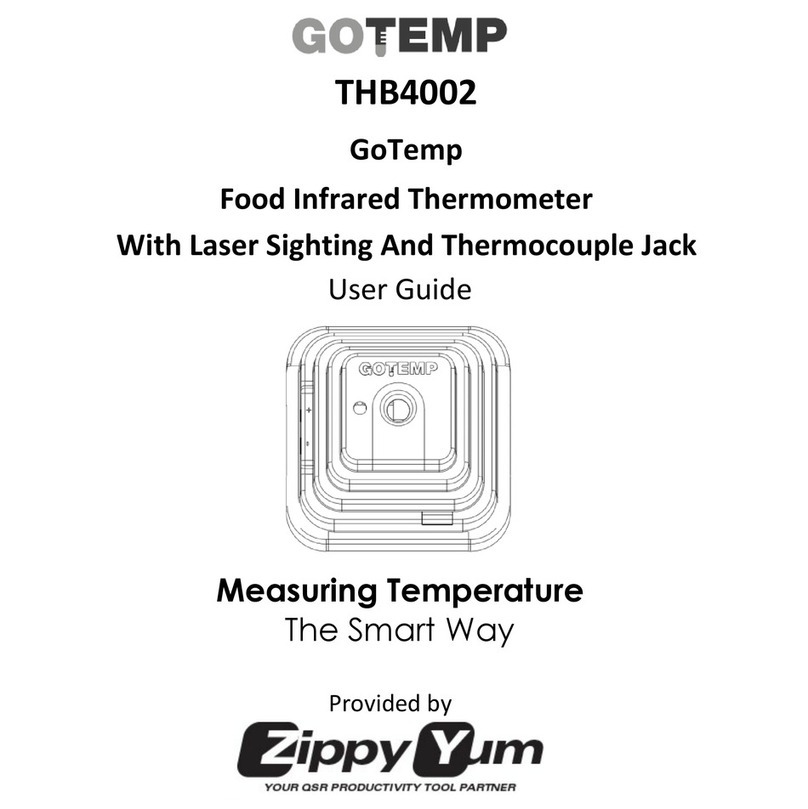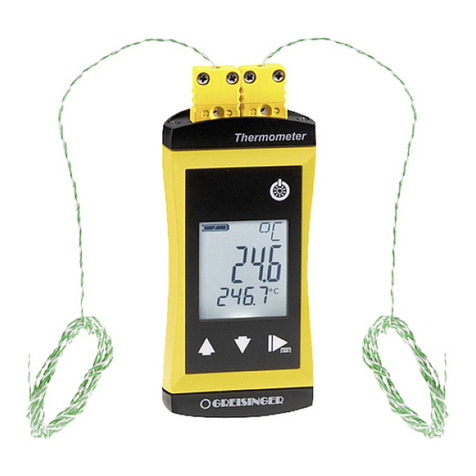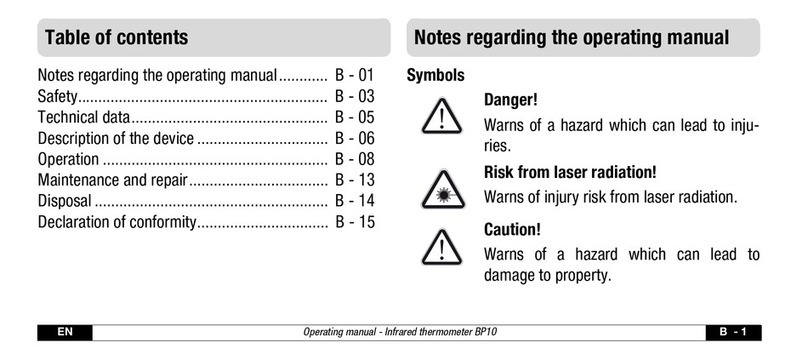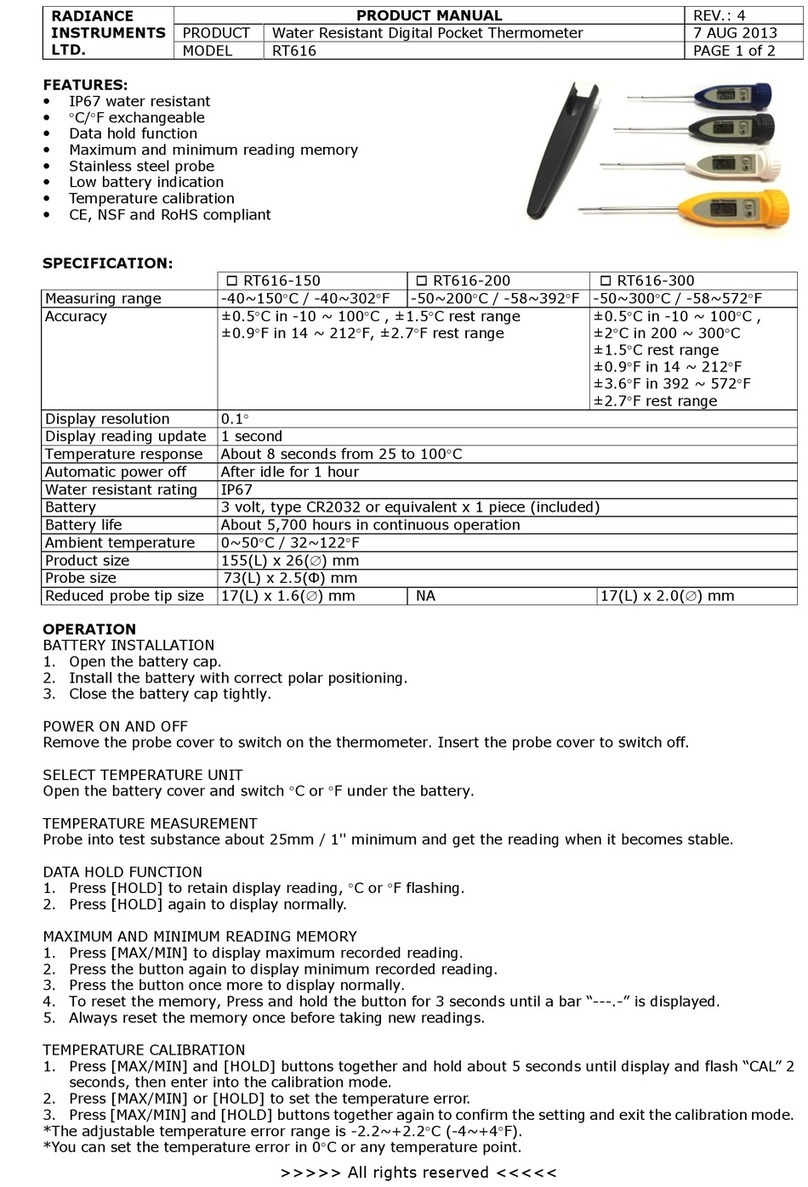Manual draft for MAV210
Page 6of 7
shorted out either through moisture or heat damage.
Do not immerse the probe in water while cleaning.
Do not allow the probe or probe wire to come into contact with flames. If cooking with grill cover
closed, only use medium or low heat.
Make sure the probe tip is inserted into the meat at least 1 inch.
If the temperature displayed seems to read too high or the temperature seems to increase too
quickly check to make sure the probe tip is not poking through the food to outside. Reposition the
probe tip in the center of the thickest part of food. Avoid touching bone or heavy fat areas.
Cautions:
Always wear a heat resistant glove to touch the stainless steel probe sensor or wire during or just
after cooking. Do not touch with bare hands.
Keep the stainless steel probe sensor and wire away from children.
Clean the stainless steel probe and dry thoroughly after each and every use.
Do not use the receiver in the rain, It is not waterproof.
Do not expose the plug of the stainless steel probe or the plug in hole of the transmitter to water or
any liquid. This will result in a bad connection and faulty readings.
Do not expose the receiver or transmitter to direct heat or surface.
Do not use stainless steel probe in microwave oven.
The Remote Thermometer registers temperatures as low as 14°F (-10°C ) and as high 410°F (210°C ).
LLL will be displayed below 14°F and HHH will be displayed above 410°F. Do not use the stainless
steel probe sensor above 410°F.
Doing so will deteriorate the wire.
Cleaning
Always wear a heat resistant glove to touch the stainless steel probe sensor or wire during or just
after cooking. Do not
touch with bare hands.
Keep the stainless steel probe sensor and wire away from children.
Wash the metal probe tip with hot soapy water and dry thoroughly. Do not immerse the probe in
water while cleaning.
Wipe the transmitter and receiver with damp cloth. Do not immerse either in water.
Information to user
“Modifications not authorized by the manufacturer may void users authority to operate this
device”
Note: This equipment has been tested and found to comply with the limits for a Class B
digital device, pursuant to part 15 of the FCC Rules. These limits are designed to provide
reasonable protection against harmful interference in a residential installation. This
equipment generates, uses and can radiate radio frequency energy and, if not installed and
used in accordance with the instructions, may cause harmful interference to radio


